UC Gardening Blogs
Pollinators on the Beach? Fancy Meeting You Here
So you're walking along Doran Regional Park Beach in Sonoma County on Tuesday, Oct. 16 and thinking...
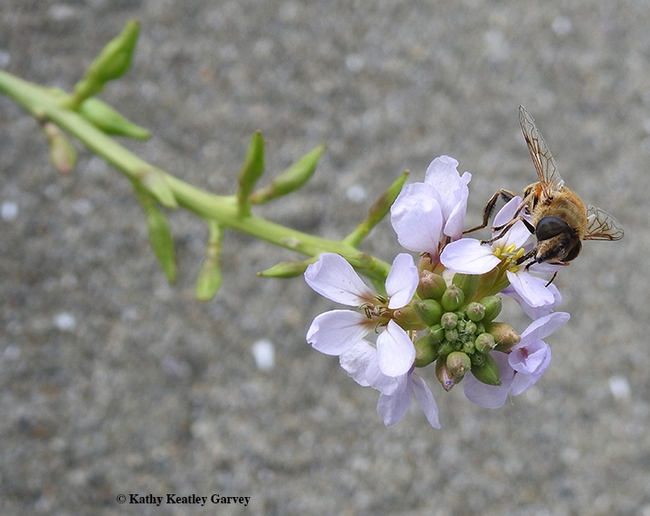
A syrphid or hover fly, Eristalis tenax, nectaring on a sea rocket plant, Cakile maritima, on Oct. 18 at Doran Regional Park Beach, Sonoma. (Photo by Kathy Keatley Garvey)
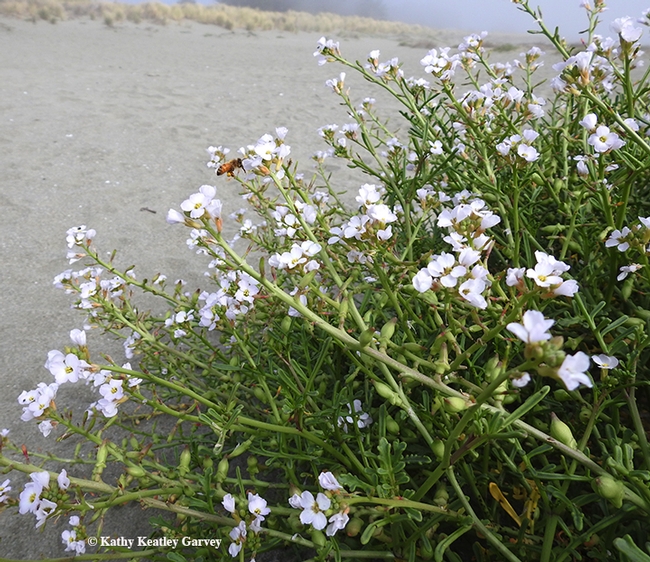
Along with sand castles and beach balls and beach umbrellas, look for pollinators nectaring on sea rocket plants at the beach. Note the honey bee. (Photo by Kathy Keatley Garvey)
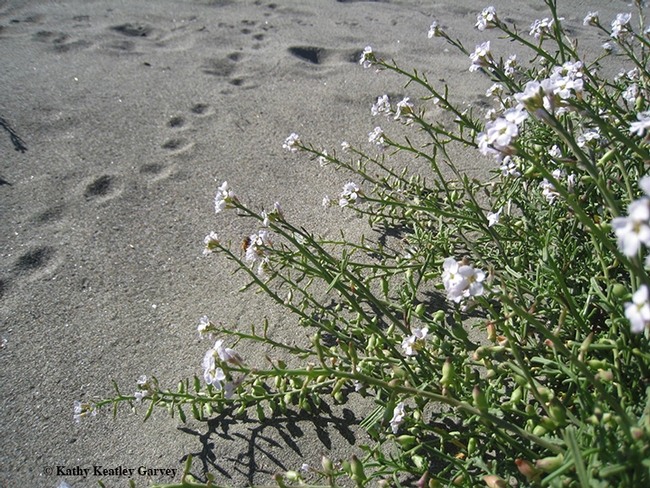
Footprints in the sand? Yes, and bees and other pollinators nectaring on sea rocket. (Photo by Kathy Keatley Garvey)
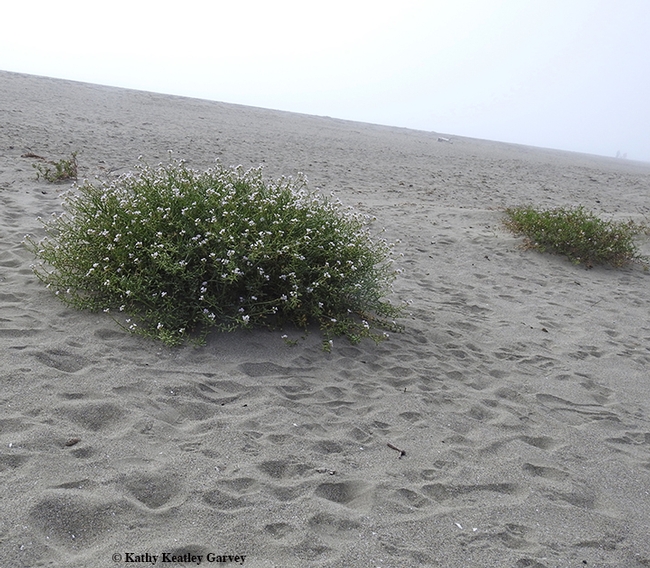
European sea rocket grows in clumps or mounds on sandy beaches along the coastlines of North Africa, western Asia, and North America. (Photo by Kathy Keatley Garvey)
Ride to UCD Arboretum Teaching Nursery
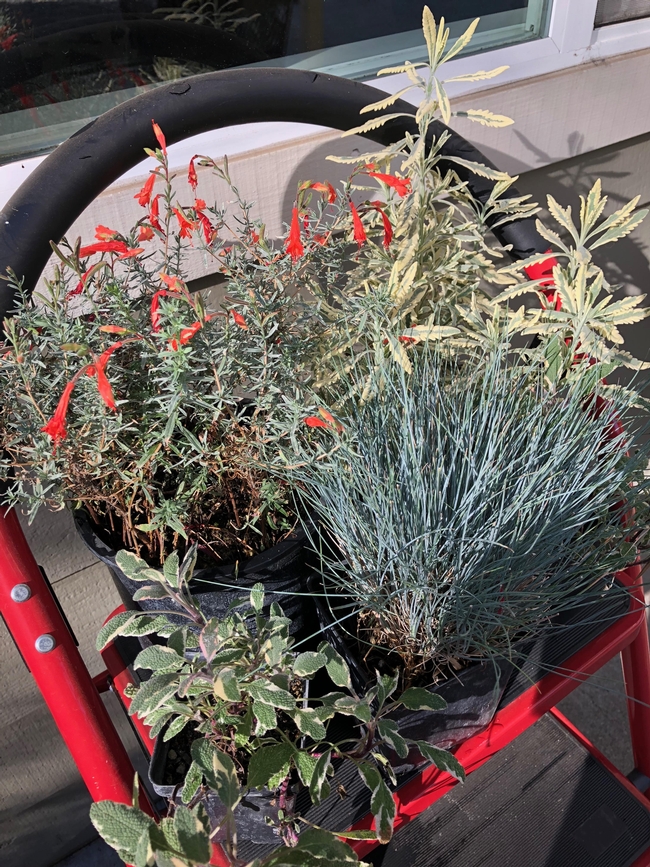
photo by Trisha Rose
Hungry, Hungry Caterpillars!
It starts out slow. Beginning in the spring (and sometimes year-around in some locales) Gulf...
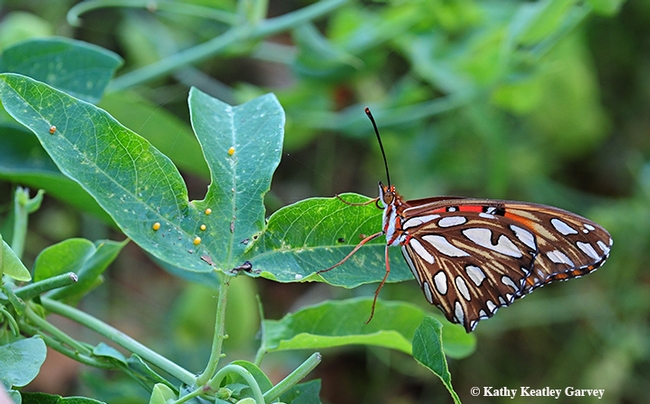
A Gulf Fritillary laying eggs on her host plant, passionflower vine. Note the eggs (yellow dots) on the left. (Photo by Kathy Keatley Garvey)
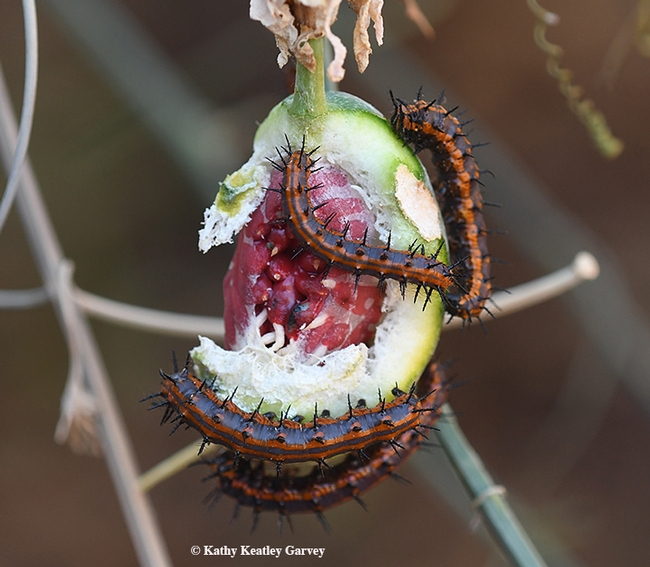
By fall, the only thing left on the passionflower vine is the fruit. The leaves are gone. The hungry caterpillars are like insect shredding machines. (Photo by Kathy Keatley Garvey)
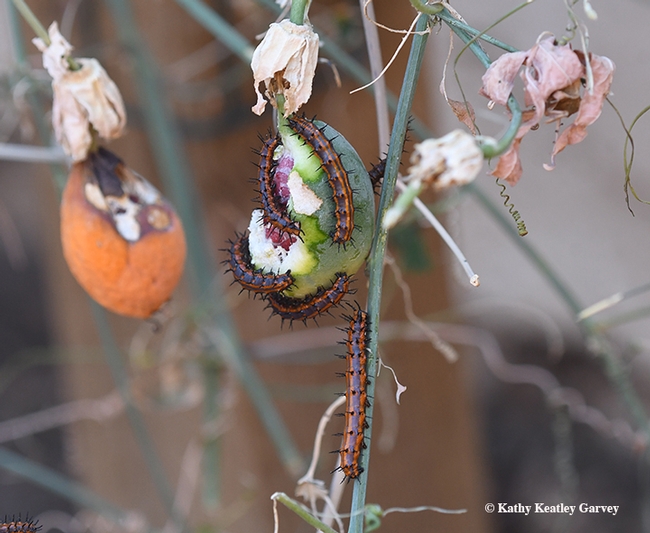
No leaves--just fruit--remain on this skeletonized passionflower vine. (Photo by Kathy Keatley Garvey)
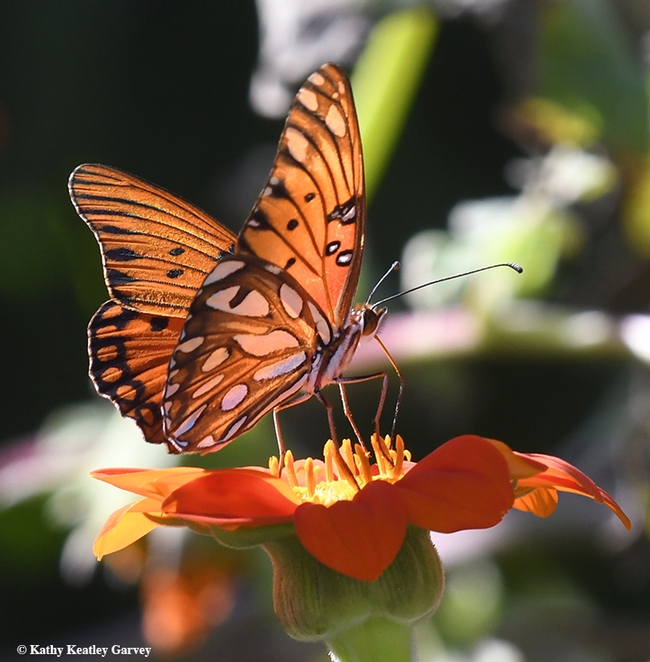
The end result: a Gulf Fritillary adult. This one is nectaring on a Mexican sunflower, Tithonia. (Photo by Kathy Keatley Garvey)
They Don't Announce Their Arrival or Departure
They don't announce their arrival or departure. If you're an insect photographer, or a...
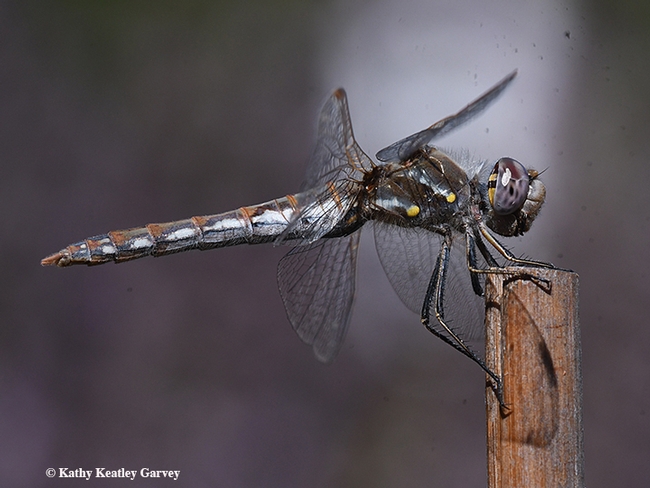
A female variegated meadowhawk dragonfly, Sympetrum corruptum, perches on a bamboo stake in Vacaville, Calif. (Photo by Kathy Keatley Garvey)
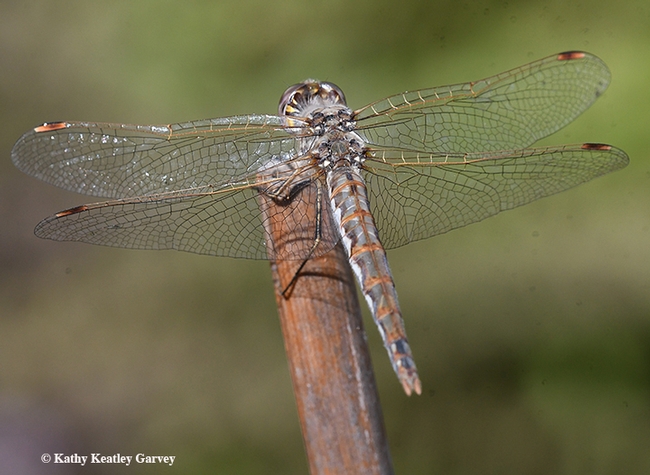
In this view, you can see the “bi-colored” Pterostigma on the wing tip and the two black spots on the top of the tip of the abdomen," noted Greg Kareofelas, Bohart Museum of Entomology associate. "This is unique to this species (Sympetrum corruptum)." (Photo by Kathy Keatley Garvey)
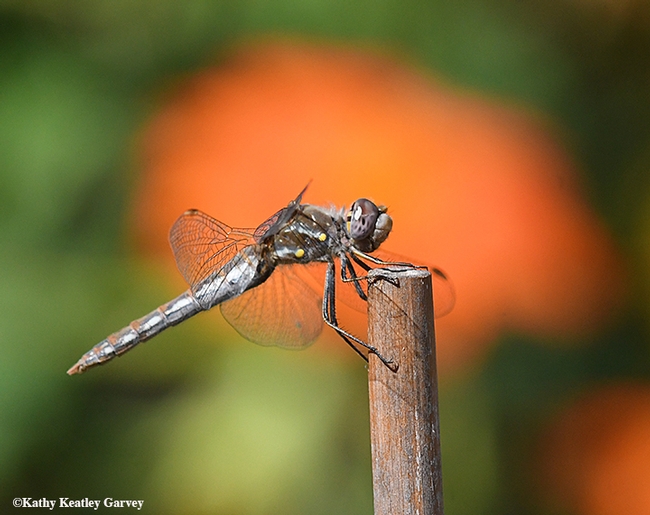
A blurred Mexican sunflower (Tithonia) forms a backdrop for the variegated meadowhawk dragonfly, Sympetrum corruptum. (Photo by Kathy Keatley Garvey)
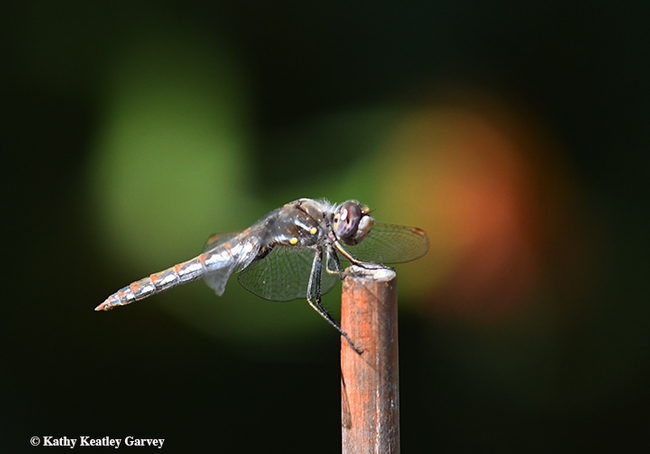
A flickering light and backdrop of a Mexican sunflower add to this image of the dragonfly, Sympetrum corruptum. (Photo by Kathy Keatley Garvey)
Spotting the Cabbage White Butterfly
They're everywhere. But they're not welcome. Agriculturists who commercially grow cabbage and...
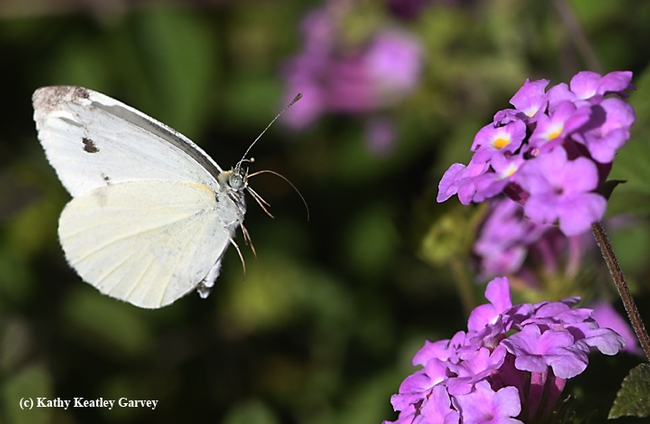
A cabbage white butterlfy, Pieris rapae, heads for lantana in a Vacaville garden. (Photo by Kathy Keatley Garvey)
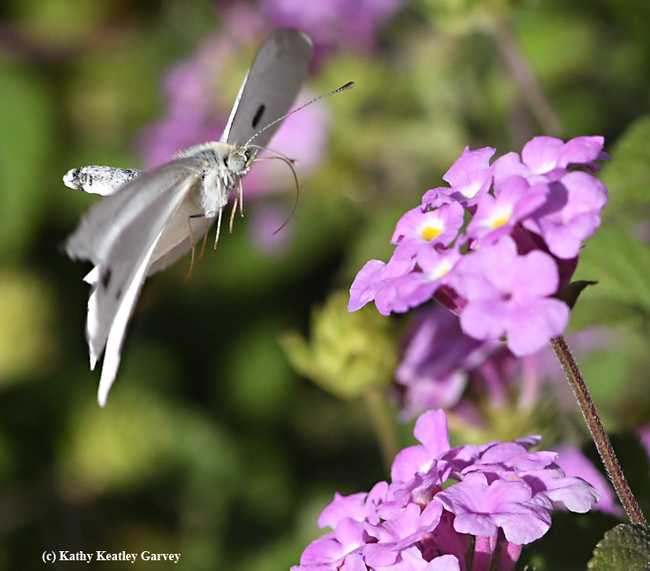
The cabbage white butterfly flips. (Photo by Kathy Keatley Garvey)
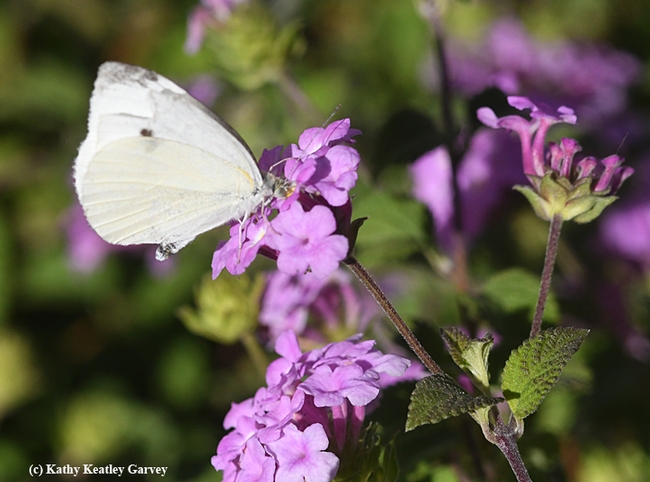
Cabbage white butterfly returns to sip some nectar from the lantana. (Photo by Kathy Keatley Garvey)



